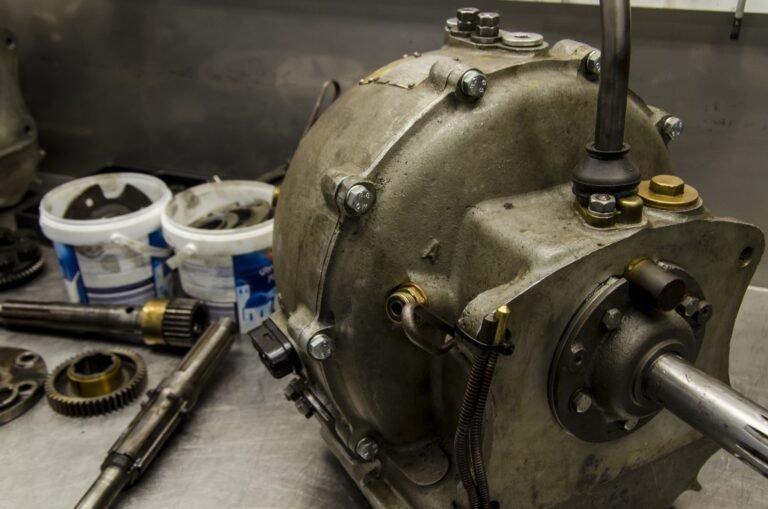Car Alignment: What Price in 2025?
Wheel alignment is a fundamental element of mechanical adjustment that ensures stable handling, optimal safety, and even tire wear. In 2025, understanding the intricacies of this parameter has become essential for any driver concerned about their car’s longevity and maintenance costs. In fact, poor wheel alignment can cause several telltale symptoms: the car may pull to the left or right, the steering wheel may drift, or uneven tire wear may quickly become apparent. These signs must absolutely lead to a thorough check, especially since wheel alignment is an integral part of wheel alignment adjustments, a discipline that encompasses other factors such as camber and caster angle. In an automotive world where mechanical precision is paramount, rigorous wheel alignment maintenance guarantees increased driving comfort and controlled operating costs. This is an important aspect, especially for owners of popular models such as those often found at AD or specialized centers like Midas. Car Wheel Alignment: Definition, Importance, and Symptoms of Poor Alignment Wheel alignment refers to the precise adjustment of the wheel angle relative to the vehicle’s longitudinal axis. This concept must be understood in a broader context, that of wheel geometry, which also encompasses camber and caster. Wheel alignment can take two main forms: Toe-in: when the front wheels are slightly closer together; Toe-out: when the front wheels are slightly apart. It’s important to note that the wheels don’t have to be perfectly parallel: proper alignment optimizes road holding, prevents premature tire wear, and ensures more natural steering. Several symptoms can indicate poor wheel alignment: The car systematically pulls to one side;
The steering wheel is offset to the left or right from the center;
Uneven or premature tire wear, particularly visible on the sidewalls; Unstable cornering behavior. These signs are often ignored, even though prompt intervention can prevent costly tire replacement and indicate manageable tire costs. Understanding the difference between wheel alignment and other suspension issues is key to anticipating these issues. Element Definition Impact on the vehicle Tyre alignment Angle of the front/rear wheels on the longitudinal axis
Influences road handling and tire wear Camber
Vertical wheel inclination Cornering stability, tire sidewall wear
Caster Tyre axis inclination, side viewSteering behavior and steering feedbackWhy good wheel alignment extends tire life Regular wheel alignment monitoring contributes to optimal tire maintenance, preventing asymmetrical and premature wear. Accurately aligning the wheels better distributes the force to the ground, improving grip and limiting unnecessary fuel consumption due to increased drag. Poor wheel alignment can cause: Localized areas of wear on the tires, requiring early replacement; Excessive fuel consumption due to reduced traction; Impaired road holding, resulting in increased driver fatigue and reduced safety.
Manufacturers like AD emphasize the importance of this adjustment in their centers, as careful adjustment significantly reduces the overall cost of running a car. For example, the owner of a well-maintained Clio 6 will replace their tires much less frequently if the alignment is checked regularly. Differences between the cost of a car alignment and the price of a complete wheel alignment ⚙ The term “wheel alignment” specifically refers to lateral wheel alignment, while “wheel alignment” encompasses all wheel angular adjustments (camber, caster, toe). The cost of a wheel alignment alone is often lower than that of a complete wheel alignment, which requires more measurements and technical adjustments.
Wheel alignment: Adjusts the wheel angle on the longitudinal axis, primarily affecting the longitudinal direction.
Complete wheel alignment: Integrates wheel alignment, camber, and caster, and adjusts all angles that affect handling and wear. This distinction is clearly reflected in the price:
Type of Service
Average Price (€)
Description Alignment only50 – 80
Wheel alignment on a single axis, often on the front axle | Complete wheel alignment | 90 – 140 |
|---|---|---|
Checking and adjustment of all angles (alignment, camber, caster) | It is important to verify that the garage is charging for the correct services. In some cases, garages charge for alignment for a simple alignment, particularly in large brands like Feu Vert or AD-certified networks. This explains the price differences often seen in quotes. | Alignment or wheel alignment: what services do garages charge for? In most cases, alignment adjustment concerns the front axle. However, some vehicles, particularly 4x4s or high-end sedans, require a complete adjustment on both axles. At a dealership or at AD, a complete diagnostic includes: Front and rear alignment check;Camber measurement; Caster check; |
Suspension component analysis before servicing. | Depending on the extent of the work, parts may need to be replaced. For example, an impact can deform a tie rod or a control arm, requiring an additional cost and impacting the cost. Servicing only the alignment will therefore be less expensive but less comprehensive. | To further understand car-related expenses, it’s worth consulting specialized guides like those available from Chanoine, which clearly decipher all cost categories. |
Detecting a Wheel Alignment Defect: Signs, Causes, and Impact on Repair Cost | A wheel alignment defect can result from multiple causes: | A hit against a curb, a pothole, or an accident; |
Aging or wear of suspension or steering parts;
Improperly performed modifications or repairs; Progressive mechanical defect due to time. The most common symptoms include steering that pulls or is stiff, a steering wheel that doesn’t return straight, and uneven, often asymmetrical, tire wear. These defects increase the risk of rutting or instability at high speeds, which poses a safety risk. A key aspect is detection: while the symptoms are visible, it is difficult to judge their severity visually without specific equipment. AD experts use electronic laser testers to accurately diagnose these defects. Symptoms of poor alignment: what signs to expect? Poor alignment generally manifests itself as: Premature and uneven tire wear, especially on one sidewall or the center; Excessive play in the steering wheel, steering wheel off-axis; Vibrations in the steering wheel on certain surfaces; Unstable handling, difficulty maintaining the line. A quick check at a center like Midas or AD may reveal a necessary adjustment. It is also advisable to consult for a used car , because poor alignment can accelerate degradation while the vehicle remains attractive.
When should you check wheel alignment and why?
L’
wheel alignment , also called parallelism
, must be checked as soon as unusual signs appear such as steering wheel that pulls to the right or left , a asymmetrical tire wear , or a
unstable driving
on a straight road. These signals often reveal a disruption of the
vehicle geometry , which may include the
camber or the
hunting
in addition to parallelism. It is recommended to have the | parallelism every 20,000 kilometers | approximately, or after an impact (pothole, sidewalk, minor accident). Neglect this |
|---|---|---|
car geometry adjustment | can lead not only to premature tire wear, but also to | excess fuel consumption |
and loss of steering precision. Regular preventative maintenance therefore extends the life of your tires, guarantees your safety, and optimizes the overall performance of your vehicle. | Cost of an alignment check after shock or maintenance: what to expect? | Intervention |
Average price (€)
Comments
Control alone 15 – 30 Low cost, sometimes offered with tire change
Parallelism adjustment
50 – 80
Front axle adjustment only
Complete geometry
90 – 140 Includes control and adjustment of all anglesA
interview well planned after an impact helps limit subsequent heavier costs such as the replacement of deformed or damaged parts. AD or Feu Vert professionals are often the references for this type of intervention with state-of-the-art equipment.What is the average cost of a car alignment and what factors influence the price?
THE
price
of a parallelism adjustment varies according to various criteria:
Type of vehicle (SUV, utility, city car);
Number of axles to adjust (front only or front/rear);
Complexity of the suspension system;
Service provider: independent garage, auto center such as Midas or AD, dealership; Geographic region; Additional services required. Generally, for a standard car, the cost of an alignment adjustment is between €50 and €80 at an independent garage or auto center. A complete wheel alignment is closer to €120 or more at a dealership. Promotions and packages are regularly offered, particularly at AD and Feu Vert, but caution is still required. Wheel alignment cost: price at a garage, auto center, or dealership Service provider Average wheel alignment price (€)Average wheel alignment price (€)
Independent mechanic
50 – 70
80 – 100
Auto center (Midas, AD)
60 – 85 100 – 130Dealership
70 – 90
120 – 140+
In addition, some packages bundle services (brakes, tires, wheel alignment) to optimize the price/quality ratio, a tip generally given during a visit to an AD center. Tips for reducing the cost of wheel alignment without compromising qualitySeveral tips can help limit the price of wheel alignment:
Compare offers online or through specialized platforms;
Preference recognized independent mechanics and AD networks, which are often less expensive than dealerships; Bundle this service with regular maintenance or tire changes to take advantage of special offers;Consider home mechanics, who make this service more accessible, often at a lower price;Anticipate and prevent damage to avoid more extensive repairs. It’s always helpful to research the subject with articles like those offered by Chanoine, which provide a clear overview of the costs associated with cars in general.Best practices: compare offers and take advantage of promotions for wheel alignment. Adopting a measured maintenance strategy also involves:Use price comparison sites for wheel alignment adjustments; Scrutinize seasonal promotional offers, particularly from chains like AD or Midas;Look into “tire + wheel alignment” packages; Always choose a professional equipped with electronic test benches for precise adjustment. A wise approach that increases return on investment while ensuring safety and road holding. Discover the trends and prices for car wheel alignment in 2025. Learn about the factors influencing costs and make the best decisions for your vehicle’s maintenance.FAQ – Car Wheel Alignment When is it absolutely necessary to have your wheel alignment adjusted? After any major impact, tire replacement, or approximately every 20,000 km. Can poor wheel alignment cause an accident? Indirectly, yes, because it affects road holding and stability, especially when cornering. What is the normal lifespan of a tire with properly maintained alignment? It is significantly extended, often 20 to 30% longer than with a poorly adjusted vehicle. Can you adjust the alignment yourself? No, it requires specialized equipment and expertise for precise adjustment. When is the best time to have the complete alignment checked? When replacing suspension components, in the event of an accident, or every year as preventative maintenance. Discover in this article everything you need to know about car alignment in 2025, including average prices, factors influencing the cost, and tips for choosing the right service. Get informed so you can make the best decisions for your vehicle’s maintenance.
Find out everything you need to know about the cost of car wheel alignment in 2025. Learn about prices, the factors that affect cost, and the importance of proper alignment for your vehicle’s safety and performance.




How to fit out the interior of a van
In a world where escape and adventure are just a stone’s throw away, fitting out the interior of a van is becoming a necessity for travel enthusiasts. Whether you’re a nomad seeking thrills or a creative traveler, the right layout…

The 10 Motorhome Brands to Absolutely Avoid
Purchasing a motorhome is an expensive investment that requires careful planning. Choosing the right model and brand are key to ensuring an optimal travel experience on the road. We help you make the right choice by identifying certain motorhome brands…

Which tires should you choose for an SUV used primarily in the city? The complete 2025 guide
.pneu-table-wrapper { overflow-x: auto; } .pneu-table { width: 100%; border-collapse: collapse; font-family: Arial, sans-serif; font-size: 14px; min-width: 600px; } .pneu-table th, .pneu-table td { padding: 12px 10px; text-align: left; border: 1px solid #ddd; } .pneu-table th { background-color: #f4f4f4; font-weight:…






